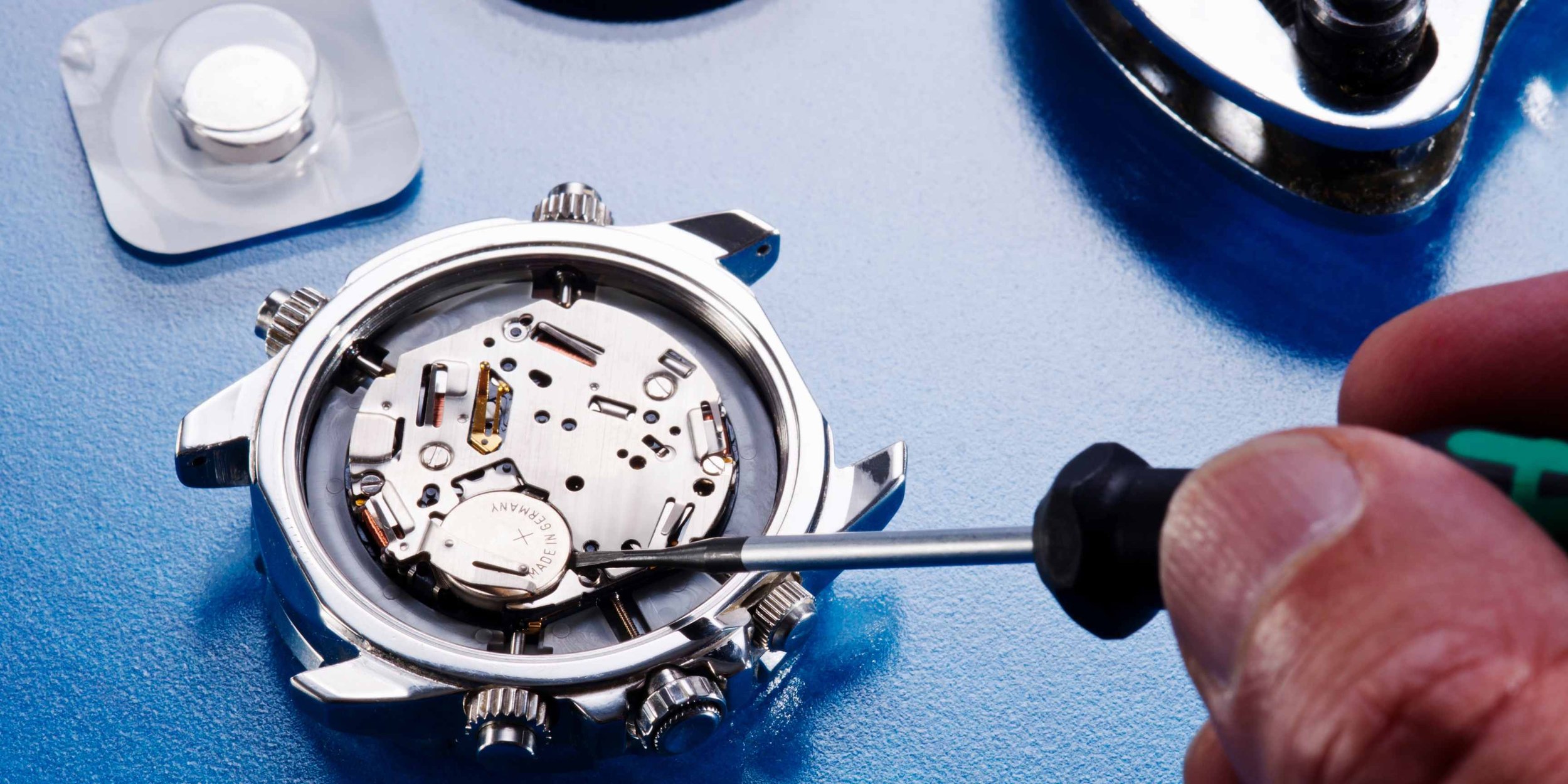Knowing When it's Time to Change Your Watches Battery
Last updated on the 8th of June 2023 by Huxley Mann.
Your watch is an essential part of your everyday life. It keeps you on time for your appointments and helps you stay organised. But like all battery-powered devices, your watch will eventually need a new battery. So knowing when to change your watch battery can save you time and money in the long run.
How long does a watch battery last?
The lifespan of a battery in a watch depends on various factors. Typically a battery in a newly purchased watch may last up to 2 years. In some cases, it will run for 3 to 4 years. However, if the watch is older, the battery may last between 18 months to 2 years. The battery life can be affected by different factors, including:
Quality: The quality of the battery used in the watch can also significantly affect its lifespan. Higher-quality batteries tend to last longer than lower-quality ones.
Frequency of use: A watch worn every day will likely need a battery replaced much sooner than one worn only occasionally.
Temperature: Extreme temperatures can degrade the performance of a battery. High heat or extreme cold can reduce the battery's effectiveness and shorten its lifespan.
Water: Moisture and water can shorten the life of a watch battery and adversely affect the watch's performance.
Functionality: Watches with extra features such as LED displays, alarms, or chronographs consume more battery than a regular analogue watch. We recommend turning off the chronograph when not in use to preserve battery life.
Condition of the watch: Be sure to maintain and have your timepiece serviced regularly to prevent additional strain on the battery.
Either way, eventually, one day, you'll need to replace the battery on your timepiece. But how do you know when it's time for a watch battery replacement?
How will I know when to change the battery in my watch?
There are a few signs that it might be time to change your watches battery:
Your watch has stopped working altogether.
A dead watch is generally a clear indication that it's time for a battery replacement.
It's also worth noting that dead batteries should be removed as soon as possible, especially if you're planning to put your watch into storage. Over time, a dead battery can rupture, and corrosive chemicals can leak over the internal components of your timepiece, causing untold damage and potentially rendering your watch unusable.
Your watch is losing time.
A timepiece that is running too slow would suggest the battery life is coming to an end, whilst a watch that is running too fast may indicate the battery has become compromised.
If your digital watch is playing up, a battery replacement will generally resolve the issue.
Owning a quartz watch can make things slightly more complicated. For example, if your timepiece is losing time even after changing the battery, it might be because the gears are worn out or need to be cleaned and oiled, or there could also be a build-up of dirt inside the watch's mechanism.
Keep your timepiece ticking with these easy-to-follow tips on how to look after your quartz watch, from being mindful of watch magnetism to sudden temperature changes and the benefits of regular servicing.
The battery has water damage.
Water is something that nearly all electrical devices on the planet dread! Water damage can severely impair the functionality of your watch battery whilst also damaging other components within your timepiece. There are a few tell-tale signs that a watch may have water damage:
Foggy or hazy interior: When you look at the watch's face, if the interior is foggy, hazy, or has a condensation build-up, it's a sign that moisture has entered the timepiece.
Discoloured dial: If the dial has turned a different colour or appears to be discoloured, there is a chance that water may have entered the watch.
Stopped or erratic movement: If your watch has stopped working or the hand movement seems erratic, there may be water damage.
Rust or corrosion: Internal components of the watch can rust or corrode when exposed to water. If you see rust or corrosion on the internal parts of the timepiece or the exterior, it's a sign that it has been exposed to moisture.
If you believe your watch has water damage, it is essential to take your timepiece to a watch repair shop immediately to avoid irreversible damage. In the mean time learn how to minimise the risks associated with water damage in this helpful guide - Water Damage: What to do if your watch gets wet?
Although externally, your watch might look perfectly normal, sadly, once the water has entered your timepiece, it can cause untold damage to the delicate components inside.
The watch case is swollen
A final sign that it's time to change your watch battery is if the watch case appears to be swollen or distended, which usually indicates a build-up of pressure inside the watch, which a faulty battery can cause.
The second hand isn't moving smoothly.
Another sign that your watch needs a new battery is the second hand on your timepiece will start ticking in short, jerky movements instead of a smooth sweeping motion, which usually happens because there's not enough power for the motors inside your watch to run efficiently.
The watch dial looks dim
If you observe that the watch face is less bright than usual, this may indicate that the battery is running low and requires replacement.
Book your watch in for a battery replacement.
In conclusion, taking care of your watch's battery is essential to maintain its longevity and ensure it works accurately. Knowing when to change your watch's battery is a crucial aspect of watch maintenance. Factors such as age, quality, frequency of use, temperature, water exposure, functionality, and condition of the watch can all impact the life of a battery. It's essential to keep an eye out for any signs of a dead battery, such as dimming or flickering backlight, second-hand moving in two-second intervals or inaccurate timekeeping. Replacing a battery is relatively easy, but leaving an old battery in your watch can be detrimental to your watch's internal components. If you're unsure if your timepiece is working correctly or if you suspect water damage, it's best to take it to a professional watch repair shop.
At AMJ Watch Repair, our watchmakers are well-versed in the process of changing watch batteries for all major watch brands including from OMEGA to Longines, Tag Heuer, Cartier, Gucci, Armani and more.
If your watch is water resistant or waterproof, we will always recommend having your timepiece pressure tested to determine whether or not it's water resistant. If your timepiece fails the pressure test, your watch's seals and gaskets may need to be replaced to maintain water resistance and protect your watch's internal mechanism from water, moisture, dirt, and dust particles. We will also provide you with a test report, guarantee and further advice on keeping your timepiece in optimum working order.
Please find out more about our watch battery replacement service on our website.


